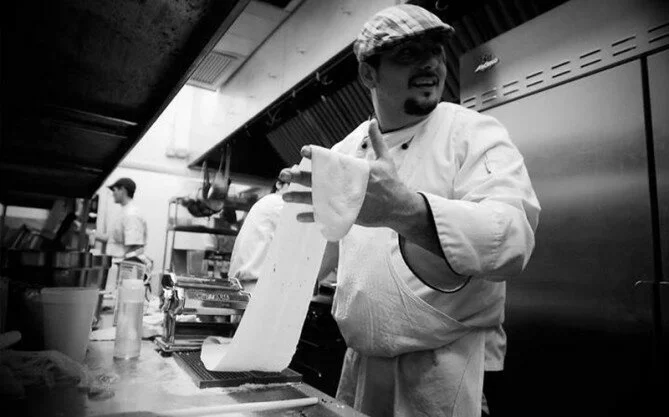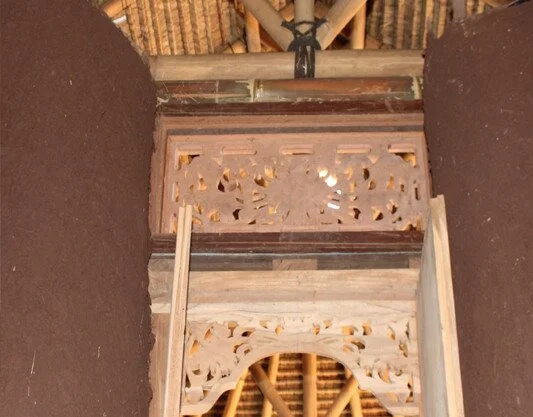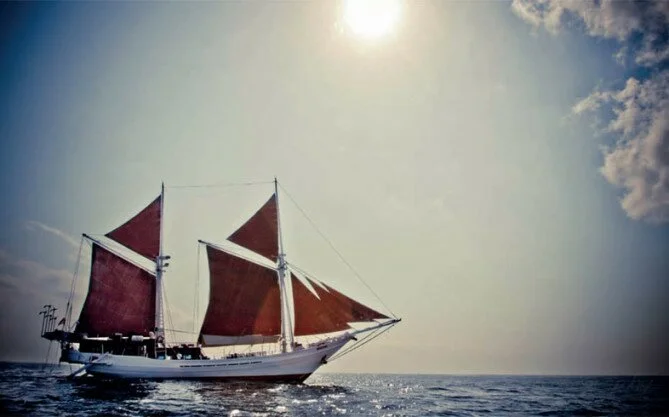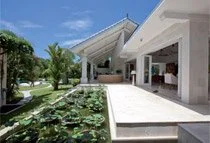Indonesia’s premier adventure cruising operator, SeaTrek Sailing Adventures, is offering a very special boat journey through the waters of eastern Indonesia to witness a total solar eclipse aboard the Ombak Putih, a traditional 42-metre wooden schooner outfitted with 12 cabins and offering the highest levels of service and comforts. The total solar eclipse of Wednesday 9 March, 2016 tracks right over the Equator in the beautiful and remote Moluccas island group of the Indonesian archipelago. Titled “Under Tropical Skies – The Total Eclipse Experience,” this 12-day cruise is a once-in-a-lifetime opportunity to experience a rare event in the company of celestial navigator Jeffrey Mellefont, and to cruise the waters and lands of the “Spice Islands”, where guests can visit remote islands and their peoples, snorkel pristine reefs, laze on tropical islands and swim in crystal clear seas to their heart’s content, while being waited on by a professional crew of sailors and stewards all day long.
www.seatrekbali.com
With various technical glitches obstructing efforts to raise Bali starlings in their natural habitat, the government is encouraging local breeders who sell captive birds to collectors to play a major role in the preservation of the critically endangered bird to further safeguard its populations in the wild. New rules state that a breeder must have proper facilities and agree to return 10 per cent of the birds successfully hatched to the wild in order to secure a license from the ministry to breed Bali starlings. Association of Bali Starling Conservationists (APCB) chairman Tony Sumampau said the population of Bali starlings currently stood at around 3,000, including those kept by local breeders. “When Bali starling breeders are numerous, the price of the birds on the black market will drop. This will discourage poachers from catching the birds in the wild because they are not worth selling,” he said. The increasing Bali starling population will also help the birds avoid inbreeding, which can cause infertility and birth defects, leading to a wider gene pool.
Following the basic five tastes of sweet, sour, bitter, salty and umami, US researchers say that fat needs to take its place as the sixth member of the band, after a study where they asked participants to organise foods according to basic tastes found that fat was unique and different from other tastes. “The taste component of fat is often described as bitter or sour because it is unpleasant, but new evidence reveals fatty acids evoke a unique sensation, satisfying another element of the criteria for what constitutes a basic taste,” said Richard Mattes, a professor of science and nutrition at Perdue University. He suggested that it be called “oleogustus,” a combination of ‘oily’ and ‘taste’ in Latin. Moving fat into a taste category of its own could help the food industry produce better substitutes for the flavour, thus reducing our dependency on high fat foods, and ultimately leading to healthier living for some.
The beauty of East Java has long been neglected by visitors from Bali, put off by the long and arduous drive on the Gilimanuk main highway, a stretch of road hogged by crazy truck and bus drivers whose only philosophy on road courtesy and safety is ‘might is right’. But all that could change with a new fast-boat service starting in December which will ferry people from Jimbaran Bay to Banyuwangi in just two hours, half the time it takes to get there by road and ferry. The owners have set themselves the target of 400 passengers a day in an effort to raise awareness (and money) for the region’s mountains, beaches, forests and all round untouched natural beauty. Here’s hoping it’s a roaring success.
In a complete disconnect between the glitzy world of high art and the working classes, an installation at a museum in Italy by Milanese artists Goldschmied & Chiari entitled “Where Are We Going to Dance Tonight?”, consisting of 300 empty champagne bottles, confetti, and cigarette butts spread around the room resembling the aftermath of a wild party, ended up in the garbage after a team of hardworking Italian cleaners moved in after the opening and cleaned house. The work was inspired by the Italy of the 1980s, “a period characterized by consumerism, hedonism, by socialist politicians and their never-ending parties,” in the artists’ eyes, but it was just a little bit too convincing for the cleaning crew. “We told them just to clean the foyer because that’s where the event on Friday night had been,” lamented the museum’s director, Letizia Ragaglia. “Evidently, they mistook the installation for the foyer.” Fortunately, the janitorial staff had conscientiously sorted the artwork into glass and paper for recycling, and the museum was able to salvage and reinstall it.
Maximising returns through smart marketing and management

Around twenty years ago when the concept of the private holiday investment villa first started in Seminyak with the likes of The Villas, Dusun and Kunja, owners were making incredible returns of 20+ per cent a year, and as a result many more investors jumped on the bandwagon to take a slice of the pie. In those days you could secure a piece of land, build and staff a luxury villa and enjoy an unheard of ROI without much marketing effort beyond building a website and enjoying word of mouth from your guests.
Google was in its infancy and high page ranking was easily achievable with just a few of the right keywords, resulting in high occupancy, big profits and a brand new style of accommodation for Bali. It was such a good concept that every man and his dog were doing it, and they were making good money and living the life.
In 2015, that has all changed, with only a small proportion of those villas still earning respectable returns. With ever increasing sophistication of Google’s algorithms, the advent of global Online Travel Agencies (OTAs) and the changing behaviour of the buying public, as well as competition from a huge number of holiday villas that have been and are still being built, it has become harder and harder for the average person with a villa and a website to attract customers. Today, many villa owners are happy if they manage to cover their costs.
Achieving a first page organic ranking on Google for a villa website has become nigh on impossible, when up against the many thousands of other similar, low-traffic sites all vying for the same business. Of course, one can always use pay-perclick ads and get on top of page one in Google for those hot keywords, but at a current cost of about $2 per click, and with a realistic conversion rate of 1 – 2%, just one inquiry may set you back $100 to $200 before one even gets a key in the door.
The behaviour of the buying public has also changed. No longer do people wander into their local travel agent to book a holiday, they go online to get the best deals and instant bookings. OTAs are now so powerful that the old villa marketing model of ‘build a website and they will come’ is no longer relevant. Companies like Booking. com, Agoda and TripAdvisor offer verified reviews and instant booking confirmation at the click of a ‘Pay Now’ button, and they guarantee the best deals and prices. The volume of traffic that these websites attract is vast and their organic ranking will always see them rise to the top. For example, Booking.com ranks 98th out of all the billions of websites that exist in the world today, TripAdvisor 188th, Airbnb 499th and Agoda 699th, leaving individual villa websites to wallow way down the bottom of the list.
There are still plenty of tourists coming to Bali and some villas are making lots of money from their visits. It’s just that so many are not. So how do you reverse the trend and start getting those returns on your investment that you used to earn in the good old days?
If you have the time, the inclination and the required tech smarts, you can do it yourself, but you must be prepared to be online 24/7, ready to respond to enquiries at a moment’s notice, manage booking calendars, configure your OTAs and ensure you are constantly getting top reviews on TripAdvisor. Alternatively, you employ the services of a smart marketing and management company that understands how best to fill your villa and to provide the top levels of service and the right technology to work with OTAs to ensure that your villa gets maximum exposure and bookings.
It’s not rocket science to start making money off of your villa. Like everything in business, if you employ the right people and use the latest technology in the right way, you can be assured of success.
INSTANT BOOKING:
Have your booking calendar synched across the entire worldwide network so when a booking is made it is updated immediately on all your OTAs, meaning no embarrassing double bookings, no emails to answer, just a ‘swipe’ online and an instant conformation by email.
DISTRIBUTION CHANNELS:
Use the latest online marketing technology to make sure that your villa is exposed to all the major online travel agencies worldwide, ensuring your villa gets the maximum exposure possible.
TOP QUALITY MANAGEMENT:
And last but not least, make sure that your staff are highly trained to create a level of service that will give your guests such a memorable holiday that they are going to keep talking about it forever.
Want to know more about smart villa marketing and management? Contact Exotiq Villa Holidays and learn how to harnesses the power of the internet, maximise occupancy and revenue using global distribution channels and instant booking facilities, and provide the highest levels of customer satisfaction. Call us on +62 361 737358 or email [email protected].































































